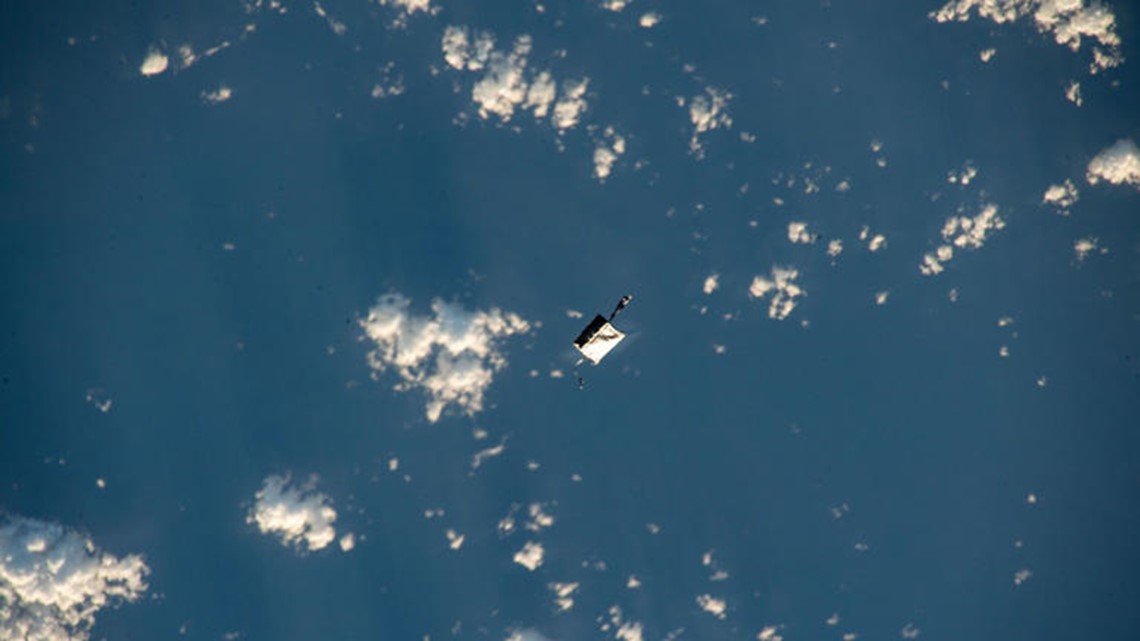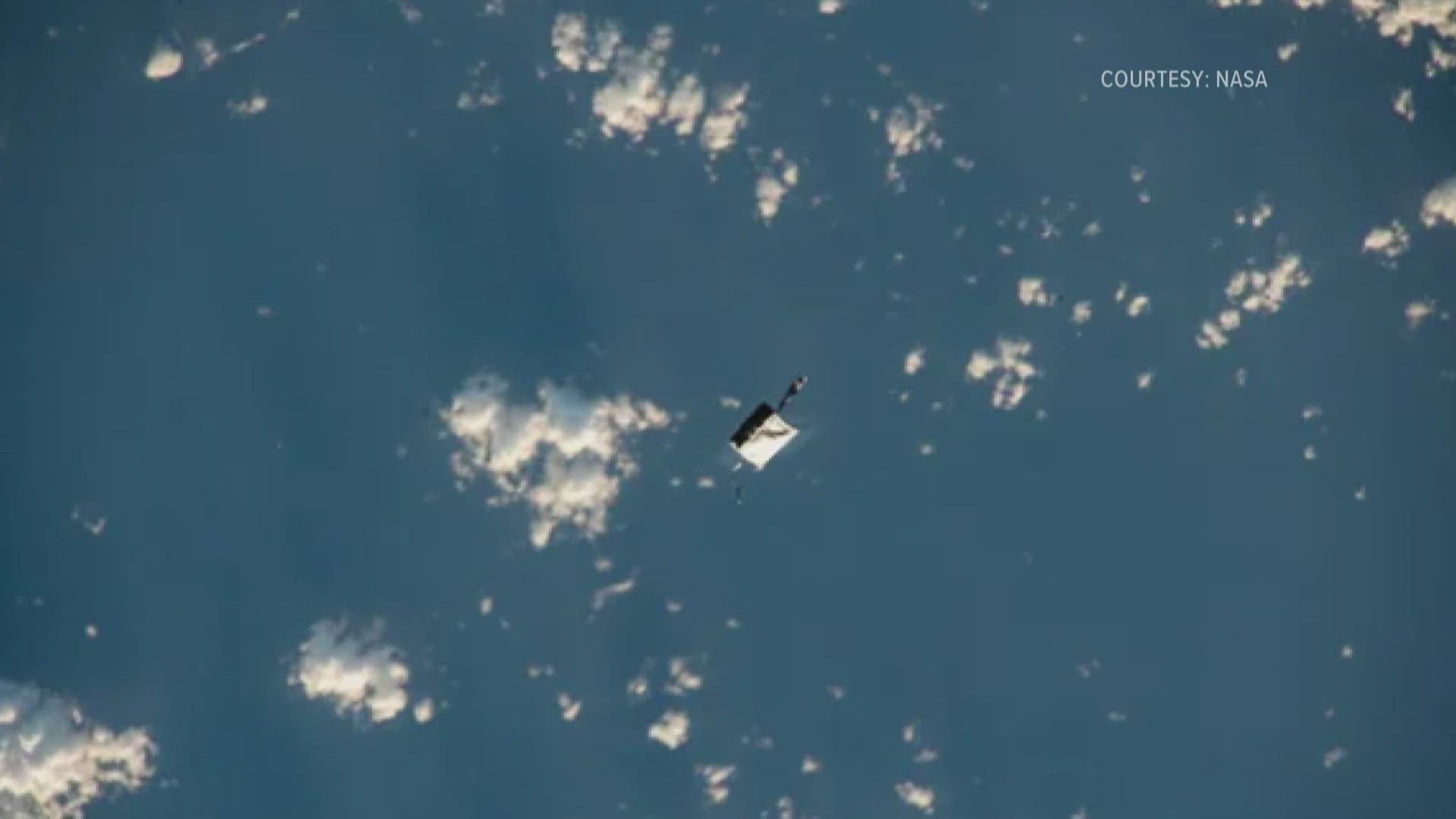WASHINGTON D.C., DC — If you look up at the sky over the next few months, you might be able to spot a unique sight.
Not a planet, or star or meteor shower, but a humble tool bag, floating in space.
On Nov. 2, NASA astronauts Jasmin Moghbeli and Loral O'Hara were conducting a spacewalk outside of the International Space Station, when the bag slipped out of their grasp, according to Space.com, entering an orbit of its own.
Now, the bag can reportedly be seen from Earth as it completes its orbit just ahead of the station.
According to EarthSky, the bag, known as a crew lock bag, has a visual magnitude of around 6, meaning it is slightly less bright than the planet Uranus, and just under the limit to be visible with the naked eye.
Story continues below


Astronomer Jonathan McDowell said the bag is circling the Earth in about a 415 by 416-kilometer (around 258 by 258 mile) orbit, and is now even catalogued by the U.S. Space Force as an artificial object in orbit, designated 58229 / 1998-067WC.
The bag is slightly too dim to see with the naked eye, but skywatchers should be able to spot it with a good pair of binoculars, said Space.com.
To see the wayward bag, Space.com recommends finding out when the best time to spot the International Space Station in your area is. Conveniently, you can track the ISS through NASA's website at this link.
Once you have found the ISS, the bag should be orbiting about two-four minutes ahead of the station.
European Space Agency astronaut Meganne Christian shared a video of the bag floating away on X.
If you want to see the new artificial satellite, you might want to do it soon. As the bag descends faster into the atmosphere, it is expected to disintegrate when it reaches around 113 km, or 70 miles, above the Earth.
Until this happens though, the bag will join the ranks of plenty of other "space junk" in orbit around Earth, including pieces of shuttles, damaged satellites and even other tools dropped by astronauts on previous missions.
In fact, according to Space.com, this isn't even the first tool bag to accidentally become a satellite, as another bag was lost in 2008 while NASA astronaut Heide Stefanyshyn-Piper was repairing a solar panel on the outside of the ISS.
More space stories from 6 News:

